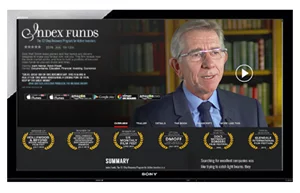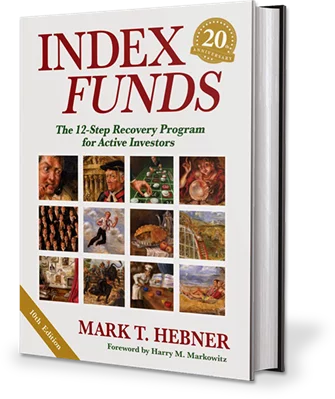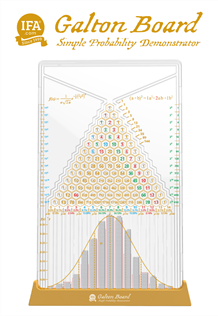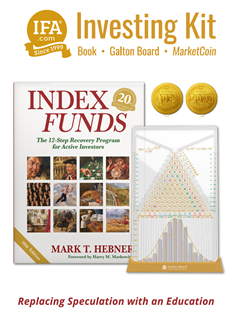A lack of consistency by active fund managers in outperforming their respective indexes has been a constant theme of S&P Global's SPIVA U.S. Scorecard. With roots tracing back to 2002, this benchmarking series — formally titled the "S&P Indices Versus Active" report — semiannually reviews data tracking performance of active fund managers against their respective indexes.
A wealth of academic evidence — from Nobel laureates such as Eugene Fama and Harry Markowitz to William Sharpe and Merton Miller — warns that efforts to time markets in response to stock price fluctuations are unlikely to achive consistent returns.
In their latest SPIVA report covering the past 20 years (through 2024), S&P researchers pointed out that a vast majority of active fund managers wound up as laggards when compared to their respective indexes. And such relatively poor results showed up regardless of short-term market conditions. In fact, they found "across all categories, underperformance rates typically rose as time horizons lengthened."
For example, the SPIVA1 report noted:
- 65% of all large-cap U.S. equity funds underperformed their indexes (across 22 equity categories).
- At the one-year horizon, 7 of 22 equity categories and 11 of 16 fixed income categories saw majority outperformance.
- After 15 years, there were "no categories in which the majority of active managers outperformed" across domestic and international equities.
The big picture takeaway of SPIVA's latest scorecard: Active management continues to produce results that often lag their benchmarks. Indeed, stepping back and reviewing active fund management over longer periods provides an even clearer statistical view of the problem with trying to pick a winning stock or bond jockey.
Below are charts based on SPIVA's most recent data providing more specifics on the number of active funds that were unable to beat comparative indexes (by asset class) over extended periods.
Performance Comparisons
U.S. Equity
The pie charts below show the percentage of active U.S. equity funds that underperformed their respective benchmarks for the 20-year period ended Dec. 31, 2024.
International Equity
The pie charts below show the percentage of active international equity funds that underperformed respective benchmarks for the 20-year period ended Dec. 31, 2024.
Fixed-Income
The pie charts below show the percentage of active bond funds that underperformed respective benchmarks for the 15-year period ended Dec. 31, 2024.
Lagging performance by active fund managers isn't a new story. As we've been chronicling for decades, leading market researchers know better than to listen to boasts about peer-beating results. Instead, managers are held to a higher standard — namely, how they've done against their respective benchmarks.
Besides comparing active managers against index results, the SPIVA research series also separates itself from the pack by taking into account survivorship bias and style consistency issues that can tilt performance numbers in active management's favor.
The SPIVA scorecard sorts through such 'noisy' data by scrubbing performance numbers in several different ways. Two of the most significant relate to:
- Survivorship Bias. This is a common practice in which managers merge or close funds, removing poor results from historical performance records. According to SPIVA research over the past 20 years, nearly 64% of domestic stock funds and almost two-thirds of international equity funds were shuttered or folded into other managers' porfolios. This practice may obscure underperformance and mislead investors comparing active management against benchmarks.
- Style Consistency. S&P researchers track how consistent managers are in following their style mandates. For example, if a large growth manager decides to buy a lot of value stocks at any given time, the SPIVA data will be adjusted to track those changes using a more appropriate benchmark and fund category. As a result, such a research methodology offers a more precise "apples-to-apples" comparison of relative performance over time.
At IFA, our investment committee encourages investors not to trust any research that doesn't scrub return numbers to take into account these types of actively managed "shell" games. As the latest data from S&P's SPIVA study indicates, (see charts below), the impact of survivorship bias and style consistency has proven to be significant over time.
In our own research, we've observed a consistent pattern — active management does not reliably deliver excess returns above benchmarks. The inclusion of the statistical significance of alpha is key to IFA's analysis when constructing a globally diversified portfolio of index funds. Taking such a scientific approach enables us to recognize if a manager's recent burst of outperformance is likely a result of luck — i.e., random chance — as opposed to actual skill.
The SPIVA research scorecard services as additional evidence highlightint the difficulty of attemptint to "beat the market", which can often have negaive implications for long-term portfolio performance. Along these lines, we remind investors that each IFA client is offered a complimentary holistic financial plan. This planning tool is designed to serve as a comprehensive blueprint to help guide each person's wealth-building future.
Footnote:
1.) S&P Global, "SPIVA U.S. Year-End 2024," March 6, 2024.
This document is not to be construed as an offer, solicitation, recommendation, or endorsement of any particular security, product, service, or considered to be tax advice. There are no guarantees investment strategies will be successful. Investing involves risks, including possible loss of principal. This is intended to be informational in nature and should not be construed as tax advice. IFA Taxes is a division of Index Fund Advisors, Inc. For more information about Index Fund Advisors, Inc., please review our brochure at https://www.adviserinfo.sec.gov/ or visit www.ifa.com















